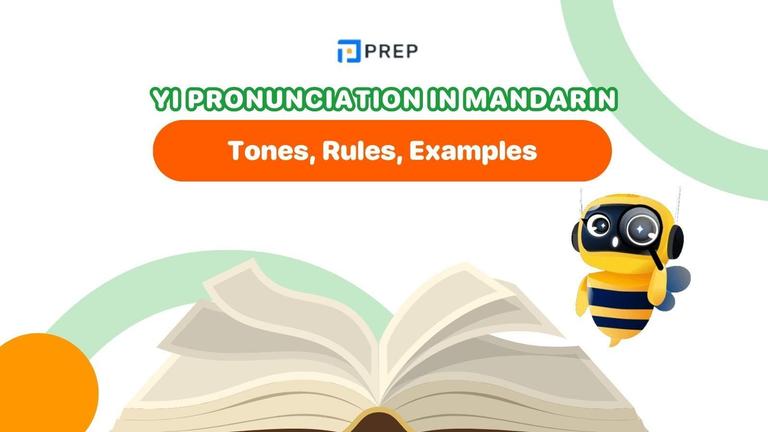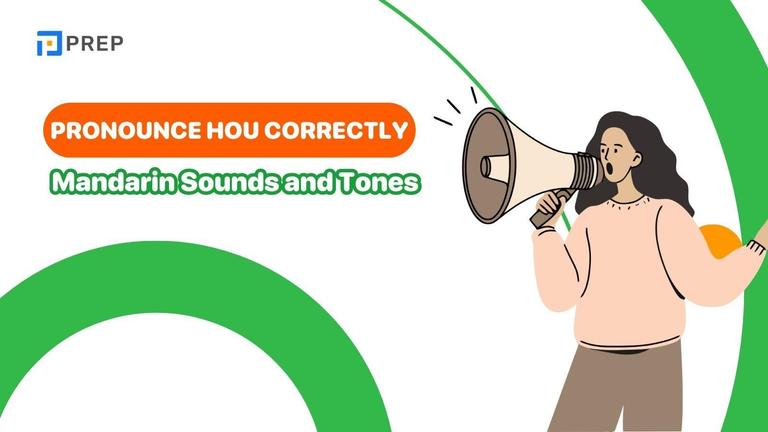Chinese Typing Method: Guide to Pinyin, Wubi, Zhuyin
Chinese typing methods make it possible to input characters efficiently on computers and phones. This guide covers the main systems—Pinyin, Wubi, Zhuyin, and handwriting—along with top tools and apps. Discover how to choose the best method and practice for HSK or daily tasks.
I. What Is a Chinese Typing Method?
In languages like English, typing is straightforward—you press a key and get a letter. But Chinese uses thousands of characters, and most modern keyboards contain only Latin letters. So how do native speakers and learners type in Chinese?
A Chinese typing method (also called a Chinese input method) is a system that allows users to type Chinese characters using a standard keyboard. These methods act as bridges between pronunciation, structure, or stroke sequences and the characters themselves.
If you're learning Chinese—especially for academic tests like HSK or TOCFL, or for real-world communication—knowing how to type correctly and efficiently is essential. Digital Chinese input is part of everyday communication: writing messages, emails, essays, or even filling out online exam forms.
II. Main Types of Chinese Typing Methods
There are several ways to type in Chinese, each designed to bridge the gap between a standard keyboard and thousands of unique characters. The method you choose depends on your goals, language background, and preferred learning style. Let’s explore the four most commonly used Chinese typing methods today:
1. Pinyin Input Method
The Pinyin Input Method is the most widely used and beginner-friendly way to type Chinese characters. It’s based on Hanyu Pinyin, which uses the Latin alphabet to represent the pronunciation of Mandarin Chinese. This method makes entering Chinese text intuitive—even for learners with no prior knowledge of Chinese character components.
To use the Pinyin method, you simply type out the phonetic spelling of a word in Pinyin, and the system displays a list of matching Chinese characters to choose from.
Example: Typing “zhongguo” will bring up character options like 中国 (China).
The more complete and accurate your input is, the more likely you’ll get the correct character suggestion on the first try.
Key Advantages
- Easy to learn for beginners
- Requires knowledge of pronunciation, not character structure
- Standard input method for digital communication and HSK preparation
- Available by default on most global operating systems and devices
If you can pronounce a word in Mandarin and know its Pinyin spelling, you can type it using this method—making it by far the most accessible and practical option for most learners of Chinese.
2. Wubi Input Method
The Wubi Input Method (五笔输入法) is a shape-based typing system that allows users to type Chinese characters by breaking them down into their component parts—typically strokes and radicals—rather than using phonetics.
Unlike Pinyin, which relies on pronunciation, Wubi is based on a layout that maps groups of strokes to specific keys on a QWERTY keyboard. This makes it highly efficient for advanced users, but requires initial investment in memorizing the structure of Chinese characters and the Wubi keyboard layout.
- Each character is decomposed into components that align with Wubi’s typing zones.
- Users press keystroke combinations to "build" a character based on its written form.
For example: The character 国 (guó) is composed using the code LWK, based on how Wubi categorizes its components.
Typing requires no input of pronunciation, so even unfamiliar or rare characters can be typed—provided the user understands their structure.
Key Advantages
- Extremely fast once mastered—no need to select from candidate lists like in Pinyin
- Allows direct input of rarely used or unfamiliar characters
- Reduces reliance on phonetic knowledge
While Wubi isn't recommended for beginners, it’s a powerful tool for long-term users, translators, or anyone aiming to type Chinese at professional speed and precision.
3. Zhuyin (Bopomofo) Input Method
The Zhuyin Input Method, also known as Bopomofo (注音輸入法), is a phonetic typing system widely used in Taiwan. Instead of using the Latin alphabet like Pinyin, Zhuyin employs a unique set of 37 phonetic symbols to represent Mandarin sounds.
This method is especially common among native speakers in Taiwan and is also taught in schools there as part of standard language education.
- Rather than typing with letters like “zhong” or “guo,” users enter phonetic syllables using Bopomofo symbols, each mapped to specific keys on the keyboard.
- Once a full syllable is typed, a list of matching Chinese characters is displayed for selection.
Example: Typing ㄓㄨㄥ ㄍㄨㄛ (Zhōngguó) will allow you to select 中国 (China) just as you would in Pinyin.
Zhuyin keyboard layouts can be either standardized phonetic keyboards or phonetic shape-based systems like Eten.
Pros of Zhuyin Input
- Helps reinforce accurate Mandarin pronunciation
- Avoids ambiguous spellings that occur in Pinyin (e.g., “shi” can map to many characters)
- Offers consistent learning for those studying in traditional Chinese environments
For learners focused on Taiwanese Mandarin, literacy in traditional characters, or standardized Zhuyin-based instruction, this input method is a valuable—and culturally relevant—tool to explore.
4. Handwriting and Stroke Input
The Handwriting and Stroke Input Method allows users to draw Chinese characters directly on a touchscreen or with a mouse, rather than typing through pronunciation or structure-based codes. It’s one of the most intuitive input methods, especially for learners who are still developing reading and writing skills.
This method is widely available on smartphones, tablets, and some desktop systems through virtual input panels.
- In handwriting input mode, users manually trace the character—stroke by stroke—on a writing pad interface. The system then recognizes the drawing and offers a list of matching or predicted characters.
- Stroke-based input (popular in some traditional devices or dictionary apps) is slightly different: the user selects strokes one at a time from a stroke list (e.g., “horizontal,” “vertical,” “left-falling”) to build a character indirectly.
Benefits for Learners
- Reinforces character shapes and stroke order
- Encourages careful attention to writing, which helps with recognition and memorization
- Valuable for visual learners or students preparing for written exams
- Offers a way to input characters without knowing pronunciation
While handwriting input is not ideal for speed or everyday communication, it is an excellent learning aid for mastering the structure of Chinese characters—bridging the gap between recognition and recall.
III. Best Tools and Apps for Chinese Typing
Once you’ve chosen a Chinese typing method that matches your learning style, the next step is finding the right tool or app to support your practice. Here are some of the most popular and effective tools for learning and mastering Chinese typing:
Google Pinyin Input
- A clean, reliable, and widely available input method built on Pinyin.
- It features smart suggestions, voice input, and supports both simplified and traditional Chinese characters.
- It’s ideal for both beginners and advanced users, especially for Android devices.
Sogou Pinyin
- One of the most advanced and customizable Chinese input methods available. Sogou offers a range of themes, shortcut keys, and massive vocabulary databases.
- It's especially popular in mainland China and suits users looking for fast, smart, and intuitive typing in Mandarin.
Pleco Typing Practice
- While known primarily as a dictionary app, Pleco includes a powerful flashcard system that allows learners to practice typing characters from memory using Pinyin input.
- It’s useful for those preparing for HSK, helping reinforce both vocabulary and typing speed.
RIME Input Method and Other Platforms
RIME (中州韵) is highly flexible and supports multiple input schemes like Pinyin, Zhuyin, and even shape-based inputs. It’s favored by advanced users who want full control over input logic and style.
Other platforms like iFlyTek Input and Baidu IME offer similar smart, AI-powered prediction engines built for power users.
IV. Chinese Typing for Exams and Practice
As language proficiency exams like HSK (Mainland China) and TOCFL (Taiwan) move increasingly toward digital formats, mastering Chinese typing is no longer optional—it’s essential. Efficient typing not only helps you complete exam tasks faster but also reinforces vocabulary, grammar, and character recognition through active recall.
Here’s how to integrate typing practice into your exam preparation routine:
HSK and TOCFL Preparation
Both exams require clear written responses in Mandarin, especially from intermediate to advanced levels (HSK 3–6, TOCFL B and C levels). Typing skills are critical for:
- Writing essays and answers in computer-based HSK formats (CBT)
- Reducing time pressure during reading-writing sections
- Avoiding Pinyin spelling mistakes by practicing ahead of time
Key strategies include:
- Typing from memory: Reproduce HSK word lists without looking
- Using structured input methods: Stick to one (e.g., Pinyin) and get faster with it
- Practicing under timed conditions
Online Chinese Typing Practice Games
Typing doesn’t have to be boring. Many interactive games and tools are designed to build your accuracy, speed, and comfort in typing Chinese characters.
Helpful resources include:
- HSKTyping.com – Practice typing HSK vocabulary with accuracy tracking
- Arch Chinese Typing Tutor – Reinforce character recognition while building muscle memory
- Keybr (customized for Pinyin) – Boost typing rhythm and reduce backspacing
- Pleco flashcards with typing recall mode – Type the correct characters from Pinyin
- Skritter or Hack Chinese – Apps that integrate recall + typing functionality
Even outside exam contexts, regular typing practice enhances:
- Pinyin fluency and tone awareness
- Understanding of word boundaries, especially in multi-syllable characters
- Retention of high-frequency characters used in reading and writing
By combining structured exam prep with daily typing practice, you’ll build the fluency, focus, and speed needed to perform well on language exams—and communicate more confidently in the real world.
Typing in Chinese may seem complex at first, but with the right method—whether it’s Pinyin, Wubi, Zhuyin, or handwriting—you’ll find that it not only builds practical communication skills but also deepens your understanding of how the language works.
Keep exploring the mechanics of Mandarin—through typing, reading, and real-world skills—with PREP’s practical resources built for learners who want to type, write, and think in Chinese naturally.

Hi I'm Chloe, and I am currently serving as an Product Content Administrator at Prep Education. With over five years of experience in independent online IELTS study and exam preparation, I am confident in my ability to support learners in achieving their highest possible scores.
Comment
Premium content
View allPersonalized roadmap
Most read












